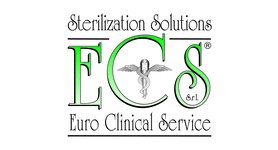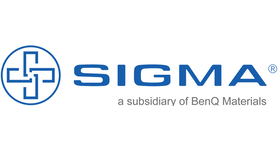The Sterile Barrier Association (SBA) is the European trade association for companies who produce Sterile Barrier Systems (SBS) and associated equipment and accessories for the healthcare industry. SBS materials and equipment are sophisticated and allow single use and reusable medical devices to be sterilised after manufacture or after use. Sterilisation may take place at a medical device manufacturer or in the Central Sterile Supply Department (CSSD) of a hospital. In both cases the critical function of the SBS is to maintain product sterility up to the point of use.
Our mission: To be the recognised expert association in the healthcare industry, promoting best practice and providing education in the use of sterile barrier systems to enhance patient safety
The Association represents its members in promoting this very important sector of the healthcare industry, creating a positive environment to drive innovation in the technology associated with the production of sterile barrier systems and in setting the highest standards in product and manufacturing excellence.
SBA members account for over 75% of the European sterile barrier industry and SBA members’ products are sold all over the world. You can see the current list of member companies here. Representatives of the companies meet twice a year to get updates on the ever-changing regulations surrounding both medical devices and the components of SBS. These meetings take place all around Europe and members are updated on the situation in each of the countries they visit by local medical market experts.
To see the full description please download the ‘SBA What we do’ presentation and the ‘About the SBA’ document.
If you would like to be a part of the SBA, visit the ‘Why become a member/affiliate to the SBA’ page for more details.
- To maintain, promote and seek to improve the product quality and quality standards relating to the manufacture and supply of single use sterilisation barrier systems to the healthcare industry.
- To provide a forum within which manufacturers of such products and services can discuss issues relevant to the industry.
- To consider all legislative measures and proposals that may affect the industry, and agree proposals to address.
- To establish and maintain links with for example European and non-European legislative and regulatory bodies, related trade associations, and users, and to cooperate with such organisations as necessary on any matter which may affect the industry.
- To promote and influence the harmonisation of standards, practices and procedures within our industry in Europe, and to endeavour to extend that influence into other non-European regions.
- To act as the European industry voice for Sterile Barrier Systems on all relevant matters and at all levels.
In the world of healthcare there is a continual reference to microorganisms or microbes. Microbes live in all parts of the biosphere where there is liquid water. Also they are found in all living things, plants and animals. There are more microbes on and inside your body than there are cells that make up your entire body. Whilst many microbes are useful and necessary for everyday life, some are not. A pathogen or infectious agent or germ is a microorganism that causes disease.
The human body contains many natural defences against some of the common pathogens including physical barriers, the immune system and some “helpful” bacteria present in the human body’s normal flora. However, when we are weak and vulnerable particularly in a hospital environment where people are sick or undergoing surgery we need to support our natural defences with additional tools to reduce the risk from pathogens. One of these key tools is the maintenance of sterility of surgical areas and medical instruments. Sterility and its maintenance, together with the prevention of cross-infection, are at the top of any list of critical factors in patient care.
Sterilisation refers to any process that effectively renders any surface, equipment or article free from viable microorganisms.
In practise, it is impossible to prove that all organisms have been destroyed. Therefore Sterility Assurance levels (SAL) are used as a measure of the survival level of microorganisms after terminal sterilisation. In Europe items such as medical devices can only be labelled ‘sterile’ if the chance of an item remaining contaminated after sterilisation is less than or equal to one chance in a million.
Terminal sterilisation for medical devices can be achieved through a variety of technologies. No single method offersthe perfect sterilisation solution for every application. The main ones used in the medical device industry are as follows:
Heat
Steam , Dry
Radiation
Electron Beam, Gamma
Gaseous
Ethylene Oxide, Formaldehyde
Low Temperature Oxidative
Vaporised Hydrogen Peroxide (VHP), Hydrogen Peroxide/ Gas Plasma
Some medical devices are packed and sterilised by specialist companies before delivery to the healthcare facility. Others are packed and sterilised within the healthcare facility. Many devices are designed as single use devices and should only be used once and then disposed of. Others are designed to be re-useable and these are effectively cleaned, re-packed and re-sterilised before re-entering the healthcare system.
The basis of an effective barrier to microbes is to ensure that it does not have openings that are large enough for microbes to pass through. Human skin is considered a very effective barrier to microbes. However, it can be compromised. Skin that has a hole, such as a wound, is no longer effective as a barrier and microbes can enter the body through the wound.
A wide range of materials can be used to create an effective microbial barrier for a medical device. The packaging around medical devices is carefully designed so that it allows those devices to be sterilised, provides a microbial barrier and maintains sterility effectively up to the point of use. This type of packaging is known as a sterile barrier system. A sterile barrier system is an essential part of a sterile medical device. As with human skin, the sterility of a medical device will only be compromised when the pack is opened or damaged in some way.
The best defence is to stay informed, follow advice on hygiene, observe what is happening in a healthcare environment and don’t be afraid to ask questions. Here are some useful links.
In order to maintain the sterility of a sterile medical device, it is important that the device is stored in its sterile barrier system in a clean, dry environment and should not be subjected to excess temperature and should be inspected for any damage to its sterile barrier system before use.
At the point of use, because only the inside surface of the pack is sterile, it is essential that the medical device does not touch the outer surface of the pack. Sterile barrier systems are designed to ensure that this can easily be done by following the correct opening techniques. Packs are designed to allow the healthcare professional to hold a non- sterile part of the pack and peel the pack apart to present the medical device without touching it or allowing it to touch the outside of the pack.
Devices should never be pushed through the pack. A pack which tears rather than peeling apart can compromise the sterility of the device by allowing loose fibres or other contaminates to touch the device.
Once the device is presented it should either be taken by a healthcare professional who has prepared themselves for a sterile procedure or dropped onto a sterile surface in a clean environment ready for immediate use.




































